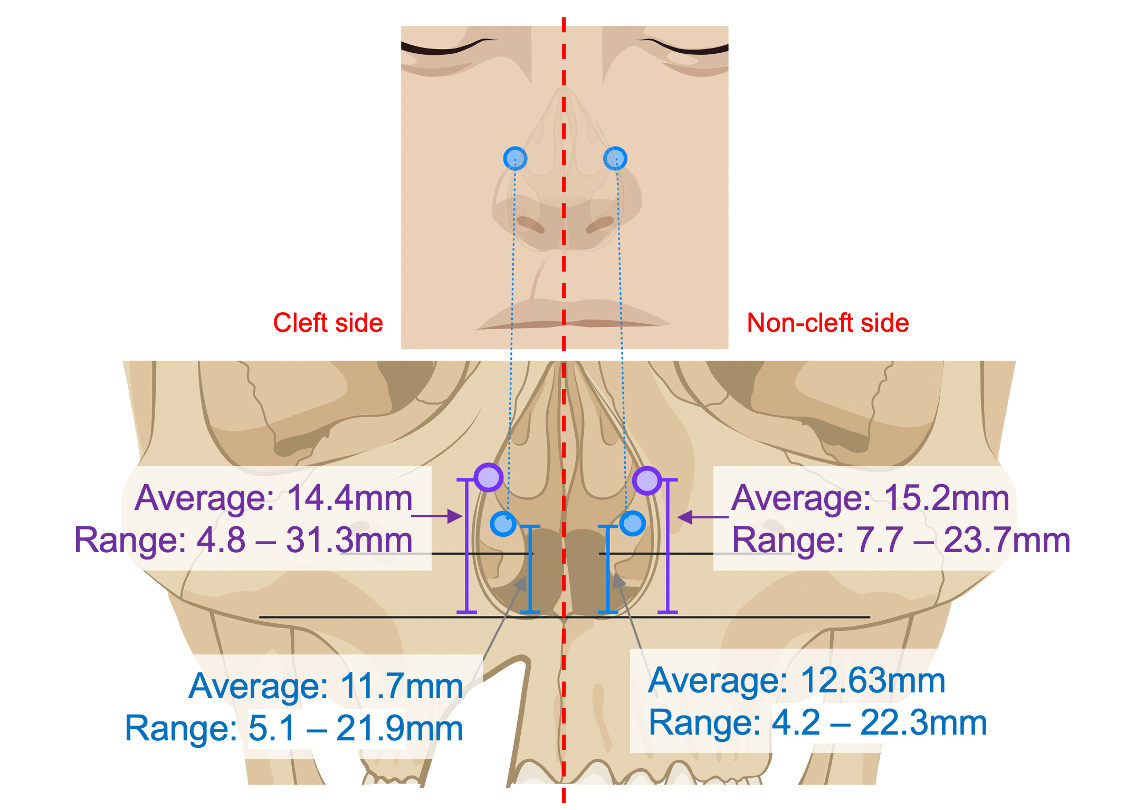LeFort I Horizontal Osteotomy: Defining the Feasibility of the "High Osteotomy"?
Alexandra N. Verzella*, Andre Alcon, Jill Schechter, Pradip Shetye, David A. Staffenberg, Roberto L. Flores
Hansjorg Wyss Department of Plastic Surgery, NYU Grossman School of Medicine, Columbus, OH
Patients with cleft lip and palate (CLP) characteristically present with hypoplastic maxilla and midface deficiency. Twenty to 35% of unilateral CLP patients undergo LeFort I osteotomy to improve facial esthetics and occlusion. A LeFort I osteotomy completed above the superior ala can improve esthetics in these patients by advancing a greater area of the midface and nose. However, this is not always feasible due to the position of the inferior turbinates. The purpose of this study was to quantitatively assess the relationship between the inferior turbinates and superior ala in patients with CLP to determine how often LeFort I osteotomy is performed above the superior ala and how often this "high osteotomy"ť is possible.
This retrospective review was performed at a single institution. 34 skeletally mature, nonsyndromic patients with unilateral CLP underwent LeFort I osteotomy between 2013 and 2020. Patients with cone-beam computed tomography scans completed pre- and post-operatively were included. Patients with bilateral clefts and rhinoplasty prior to post-operative imaging were excluded. Measurements of the superior ala and inferior turbinates were taken from the post-operative CBCT.
The sample included 26 males and 8 females, 13 right- and 21 left-sided clefts. The inferior turbinates are above the superior alar crease ~75% of the time. One (2.9%) osteotomy cut was above the level of the cleft superior alar crease, and no cuts were above the level of the non-cleft superior ala. On average, the superior ala was 2.6mm below the inferior turbinates. The average vertical distances from the superior alar crease and the inferior turbinates to the base of the non-cleft side pyriform aperture were 12.2mm (95% CI 4.0-20.3) and 14.8mm (95% CI 4.6-25.0), respectively. To complete a "high osteotomy,"ť with 95% confidence, the cut should be 20.4mm from the base of the pyriform aperture.
A "high"ť osteotomy is not possible in every patient due to the relationship between the superior alar crease and the inferior turbinate.
Back to 2023 Abstracts


